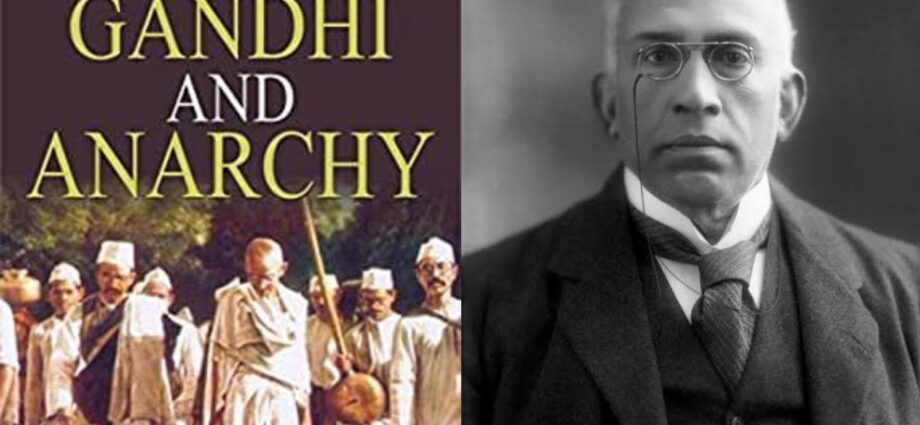“गांधी और अराजकता”(Pushpendra Kulshrestha) While every Indian knows about Jallianwala Bagh massacre, few of us think about the reactions of the British public to the event. The massacre itself was blacked out by the government in India and martial law was in place. When news got out, the British tabloids referred to Jallianwala Bagh massacre as the “Amritsar affair” — in an obvious use of minimising language.How could the “affair “ change the attitudes of British public if they were denied truth? The answer lies , as often, in the efforts one man. A man whose origins are as far away from Punjab as one can imagine.Sir Chettur Sankaran Nair was born in an aristocratic family in 1857 in Palakkad district of Kerala. His strong sense of fairness and justice, drove him to pursue law. Nair was an iconoclast and defied the dictates of Vakil association, which said no Indian would work under a British barrister. His reason : his clients had the freedom to choose their lawyer. To him justice mattered more than the color of the lawyer’s skin. He was a vociferous advocate of social reforms.As Madras High court judge, he ruled that those who converted to Hinduism cannot be treated as outcastes. He also supported inter-religious marriages and was clearly ahead of his time. He became the youngest leader of Indian National congress. When the Montagu Chelmsford reforms were introduced in 1908, he called out the act as being partial. Even though Sir Edwin Montagu called him an “impossible man” , the British respected his moral rectitude and knighted him in 1912. In 1915 Nair became a member of the powerful Viceroy council and was given the education portfolio.Then Jallianwala Bagh happened.Nair resigned from the Viceroy council in protest – something unheard of , at that time. . He wrote “Gandhi and Anarchy” in which he openly accused Punjab Governor Michael O’Dwyer (the man who would be later shot by Shaheed Udham Singh). In response, O’Dwyer filed a defamation suit against Nair.Nair faced a suit against a British man in a British court , presided over by a British judge and a British jury. All cards were stacked against him – yet he fought valiantly. The trial was the longest civil case London had seen until that time and lasted five and a half weeks. It laid threadbare the British atrocities in India and got extensive press coverage , something neither Nair nor O’Dwyer could have imagined. The British public, for the first time, understood that the call for Indian Swarajya wasn’t rebellious or seditious.Sadly Nair lost the case 11 to 1 and had to pay a fine of 500 pounds. O’Dwyer said he would forgo that amount if Nair apologises. To which Sir Chettur Sankaran Nair said, “ I would rather pay 500 pounds than say something I don’t believe in. Besides what’s the guarantee that the next 12 shopkeepers in a British court wouldn’t side with their own? “His fearless nature ensured that people all over the world heard about Jallianwala Bagh massacre. From New York to Paris, from Berlin to Moscow , Nair shook the image of the mighty British Empire, if only for five weeks.Some battles aren’t fought to be won, but to show the world that a man stood his ground on the battlefield. The greatest tragedy such a warrior can face is being forgotten, erased from the history books of the very nation he fought for. The least we can do to correct such historic wrongs, is to tell our children about courage and conviction of our heroes.
![]()
- Scrap the 1000 Years Old Derelict Institution of Islamic Madarssas - January 7, 2022
- Gandhi and Anarchy – C. Sankaran Nair - December 24, 2021

